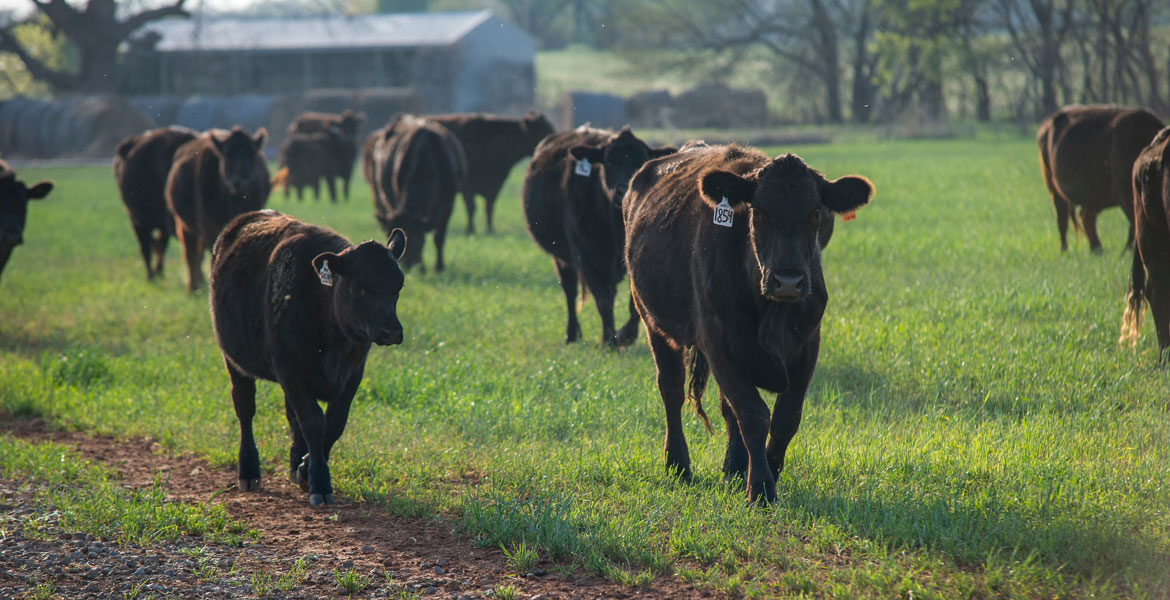
OSU Veterinary College receives USDA Veterinary Services Grant
Wednesday, October 23, 2019
Oklahoma State University College of Veterinary Medicine received a U.S. Department of Agriculture National Institute of Food and Agriculture Veterinary Services Grant in excess of $235,000. The funds will be used to create an Integrated Beef Cattle Program for Veterinarians to enhance practice management and services.
“Oklahoma has 1.6 million beef cows, yet lacks the veterinarians necessary to service the cattle operations,” explained Rosslyn Biggs, DVM, assistant clinical professor, beef cattle extension specialist and director of continuing education at the College of Veterinary Medicine and project co-lead. “This reduces opportunities for rural prosperity and economic development. The shortage will likely increase as veterinarians retire and producer needs change from individual medicine to herd health management.”
To counteract this problem, OSU seeks to offer intervention strategies for rural sustainability by expanding veterinary skills and knowledge of herd health, nutrition, forage management, reproductive management, veterinary practice management and other common needs of beef producers.
Leading the effort with Biggs is John Gilliam, DVM, MS, DACVIM, DABVP, clinical associate professor at the College of Veterinary Medicine. Rounding out the project are OSU co-principal investigators Jerry Malayer, PhD, professor, McCasland Chair, and associate dean for research and graduate education, College of Veterinary Medicine; Derrell Peel, PhD, agricultural economics, Division of Agricultural Sciences and Natural Resources; David Lalman, PhD, professor, Harrington Chair, and extension beef cattle specialist, Division of Agricultural Sciences and Natural Resources; Carlos Risco, DVM, DACT, dean, College of Veterinary Medicine; and Paul Beck, PhD, associate professor and Denis and Marta White Endowed Chair, Division of Agricultural Sciences and Natural Resources. Also consulting on the project is Richard Prather, DVM, owner of Ellis County Animal Hospital in Shattuck, Oklahoma.
“Our first goal is to develop, administer and analyze data surveys in order to fully evaluate the shortage situation including geographic range of veterinarians,” Gilliam said. “Next we will develop a series of educational modules for veterinarians focused on beef cattle herd management. The final goal will be to connect veterinary students with participating rural veterinarians to help sustain rural veterinary practices.”
The expanded services provided by the practitioners will allow beef cattle producers to become more productive while simultaneously enhancing animal health and wellbeing. These benefits will ensure greater food safety, public health, and increase opportunities for Oklahoma and the region’s economic development and prosperity.
“We anticipate that 50 percent of practices will experience an improvement in their business through enhancements such as decreased wage gaps, more predictable hours, and less travel time,” Biggs added. “We also expect that more students will graduate entering rural practice by providing them the skills needed to effectively sustain a rural practice and by providing networking opportunities with current rural practitioners.”
The Veterinary Services Grant Program aims to relieve veterinarian shortage situations and support veterinary services. Grants are available on a competitive basis to qualified entities to develop, implement, and sustain veterinary services through education, training, recruitment, placement and retention of veterinarians, veterinary technicians, and students of veterinary medicine and veterinary technology.
MEDIA CONTACT: Taylor Bacon | Public Relations and Marketing Coordinator | 405-744-6728 | taylor.bacon@okstate.edu
